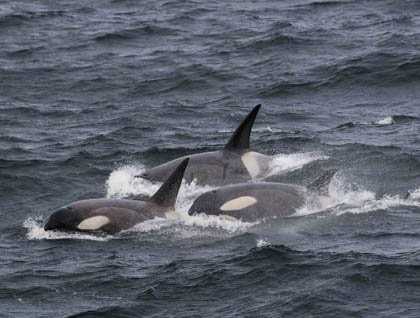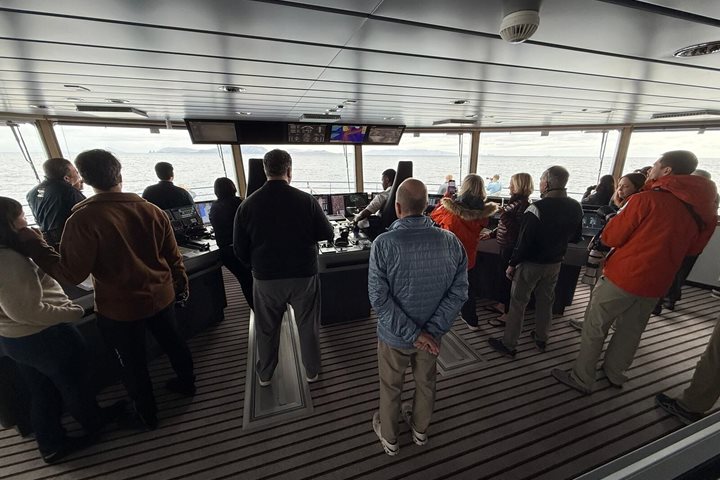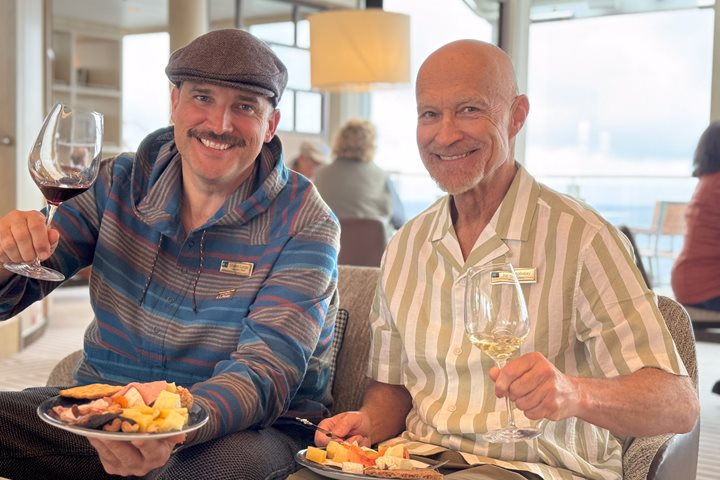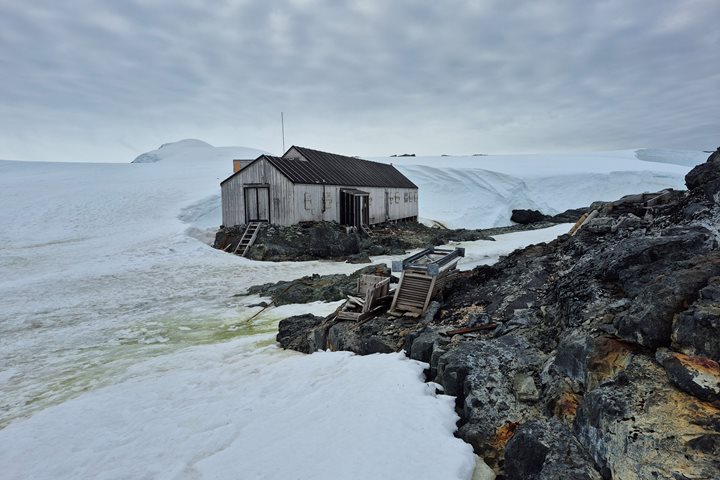The extent of the global distribution of killer whales is matched only by that of humans. Unlike humans, however, killer whales thrive in some of the planets most extreme environments. Today, Antarctica is one such stronghold of theirs, and on awaking this morning we were greeted by a very active group feeding close to the ship. For almost an hour they surfaced repeatedly around us, as if oblivious to our presence, before we left to continue our day’s activities. The first of these activities was a landing at Neko Harbour.
Neko Harbour, which takes its name from a whaling factory ship, is dominated by a large glacier which flows into it. This active calving face rumbles and cracks frequently throughout the day, forever reminding us of its presence and dynamic nature. Such noise and movement almost gives the glacier a personality or a sense of character, as if it were a sleeping giant occasionally grunting in its sleep. We hiked upwards along the ridge which leads from the landing sites to take in one of the Antarctic Peninsula’s most striking vistas—a view of the glacier from above, looking out over the sea.
After lunch we made our way to Wilhelmina Bay via the Errera Channel. This area is known for an abundance of whales, and today it delivered. Under clear skies and in warm sunshine we spent hours watching humpback whales milling about around the ship. Occasionally a whale might breach or tail slap. In all, this was a day that showed us what Antarctica does best, and we still have plenty more to come.







